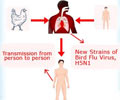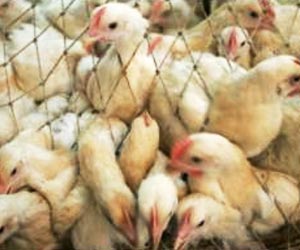Avian flu outbreak in Antarctica threatens iconic wildlife! Learn more about the crisis gripping the icy continent.
- Avian flu outbreak detected among seal populations in South Georgia
- Concerns arise over potential transmission to penguins, sparking conservation efforts
- Falkland Islands braces for large-scale outbreak as chick mortality rates rise
Avian Flu Ravages Seal Populations in Sub-Antarctica; Penguins Could Be Next
Go to source).
Avian Flu Outbreak Affects Seals and Penguins in Antarctica
The arrival of H5N1 sparked fears of its potential transmission to other wildlife species, particularly penguins, which inhabit the same fragile ecosystems as seals. While seals bore the brunt of the initial outbreak, recent developments indicated a concerning shift in the virus's impact. Scientific investigations conducted by the Scientific Committee on Antarctic Research (SCAR) uncovered distressing evidence of H5N1 among gentoo penguins, a species endemic to sub-Antarctic regions. Initial findings suggested a significant threat to penguin populations, with confirmed cases of the virus detected through Polymerase Chain Reaction (PCR) testing.Did You Know?
The emergence of avian flu in Antarctica poses a grave threat to seals and penguins, underscoring the vulnerability of polar wildlife.
Falkland Islands Face Risk of Avian Flu Outbreak
The Falkland Islands, a key habitat for various penguin species, faced a grim reality as authorities prepared for the possibility of a large-scale outbreak. Reports of chick mortality further underscored the severity of the situation, prompting urgent action to contain the spread of the virus and safeguard vulnerable wildlife populations.Measures to Contain the Avian Flu Outbreak
The emergence of H5N1 in seals and its subsequent transmission to penguins highlighted the interconnectedness of ecosystems and the profound impact of infectious diseases on wildlife. As scientists and conservationists worked tirelessly to mitigate the crisis, the incident served as a stark reminder of the ongoing threats posed by avian flu and the critical need for robust surveillance and intervention measures in remote and vulnerable habitats. The response to the outbreak involved collaborative efforts between government agencies, research institutions, and conservation organizations to monitor the spread of the virus and implement measures to protect vulnerable wildlife populations. Additionally, public awareness campaigns were launched to educate local communities and visitors about the importance of biosecurity protocols in preventing the introduction and spread of infectious diseases in sensitive ecosystems.Reference:
- Avian Flu Ravages Seal Populations in Sub-Antarctica; Penguins Could Be Next
https://earth.org/avian-flu-ravaging-through-seals-penguins-antarctica/
Source-Medindia











